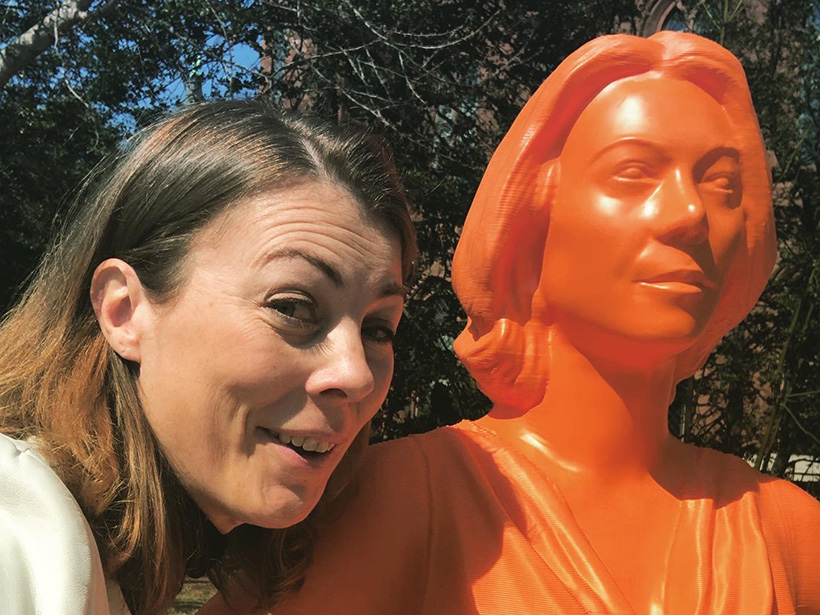On Saturday, 5 March 2022, Kimberley Miner stood in front of a bright orange, 3D-printed statue of herself on the National Mall in Washington, D.C. She joined 120 other women scientists who were also being honored as part of the American Association for the Advancement of Science’s IF/THEN initiative, which works to encourage young girls to pursue careers in science, technology, engineering, and mathematics (STEM). According to Miner, “statues are usually of people who are dead and they are [usually] old white men,” so having statues of living women scientists was an extremely powerful statement.
“I think [the exhibit] made a difference to people,” said Miner, an Earth and climate scientist at NASA’s Jet Propulsion Laboratory (JPL). “And I know it would have made a huge difference to me as a kid, because it took me a long time to come around to believe I was smart enough to be a scientist.”
In fact, Miner didn’t start her Ph.D. until she was 28, but it was well worth the wait. Her studies, in the Earth and climate sciences, took her from the University of Maine to isolated regions in Canada, Alaska, and other high-alpine ranges to study the effects of climate change. “Ever since I’ve been little, exploration of the outdoors has been the point. That was always the point for me, and that is why I love this career,” she said.
Now, Miner has stepped into a manager role at JPL, where she is working on two satellite missions (one is still in proposal) while continuing her Arctic research with the ABoVE (Arctic Boreal Vulnerability Experiment) program and the Arctic Methane Research program. The former aims to gather a greater understanding of ecosystem changes in western North America, and the latter examines the connections between permafrost thaw and methane emissions in the Arctic.
“Put yourself out there, and keep putting yourself out there even when you get a no. That is important to do.”
According to Miner, the reason she can fill “a bunch of different roles” is because she consistently seeks to put scientific data in a practical perspective to accomplish a larger goal. “That is, to preserve the biodiversity and integrity of the planet, and to help preserve wild spaces,” Miner said.
Making a difference in the field requires time and effort, especially for students and early-career scientists who want to tackle large, broad goals like climate change mitigation. However, according to Miner, if someone has an idea to help save the planet, or wants an internship, experience, or guidance, a simple ask is the first step.
“It is always worth asking,” said Miner. “Put yourself out there, and keep putting yourself out there even when you get a no. That is important to do.” But she adds, “I mean, don’t get me wrong—no’s hurt. They require a grieving period. It can take days, to weeks, to months, depending on how big the no is. But you have to keep asking, and there will be a yes, and hopefully it will be a yes you want to say yes to as well,” she added.
This profile is part of a special series in our August 2022 issue on science careers.
—Alexandra Scammell (@alexkscammell), Associate Editor


